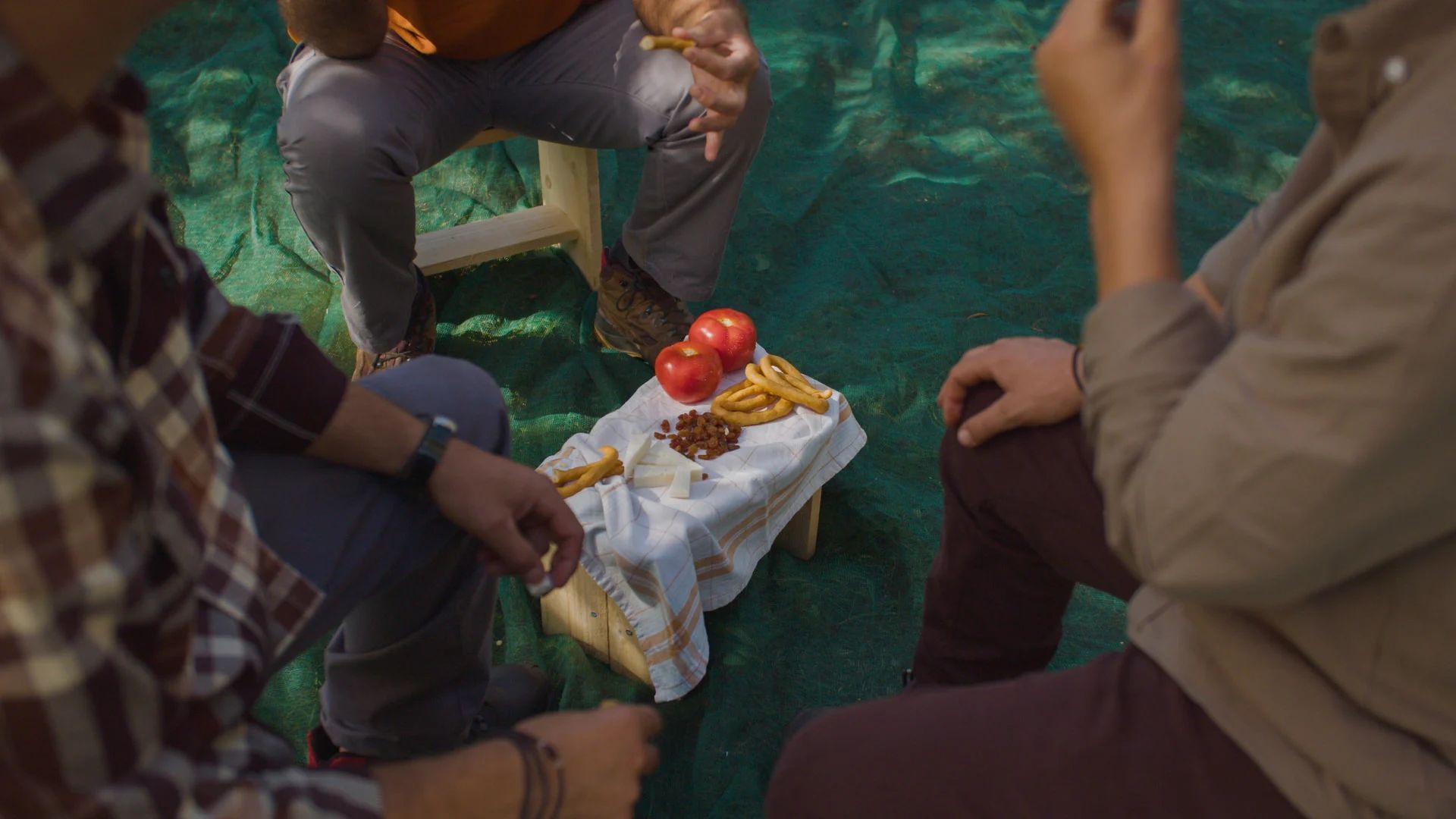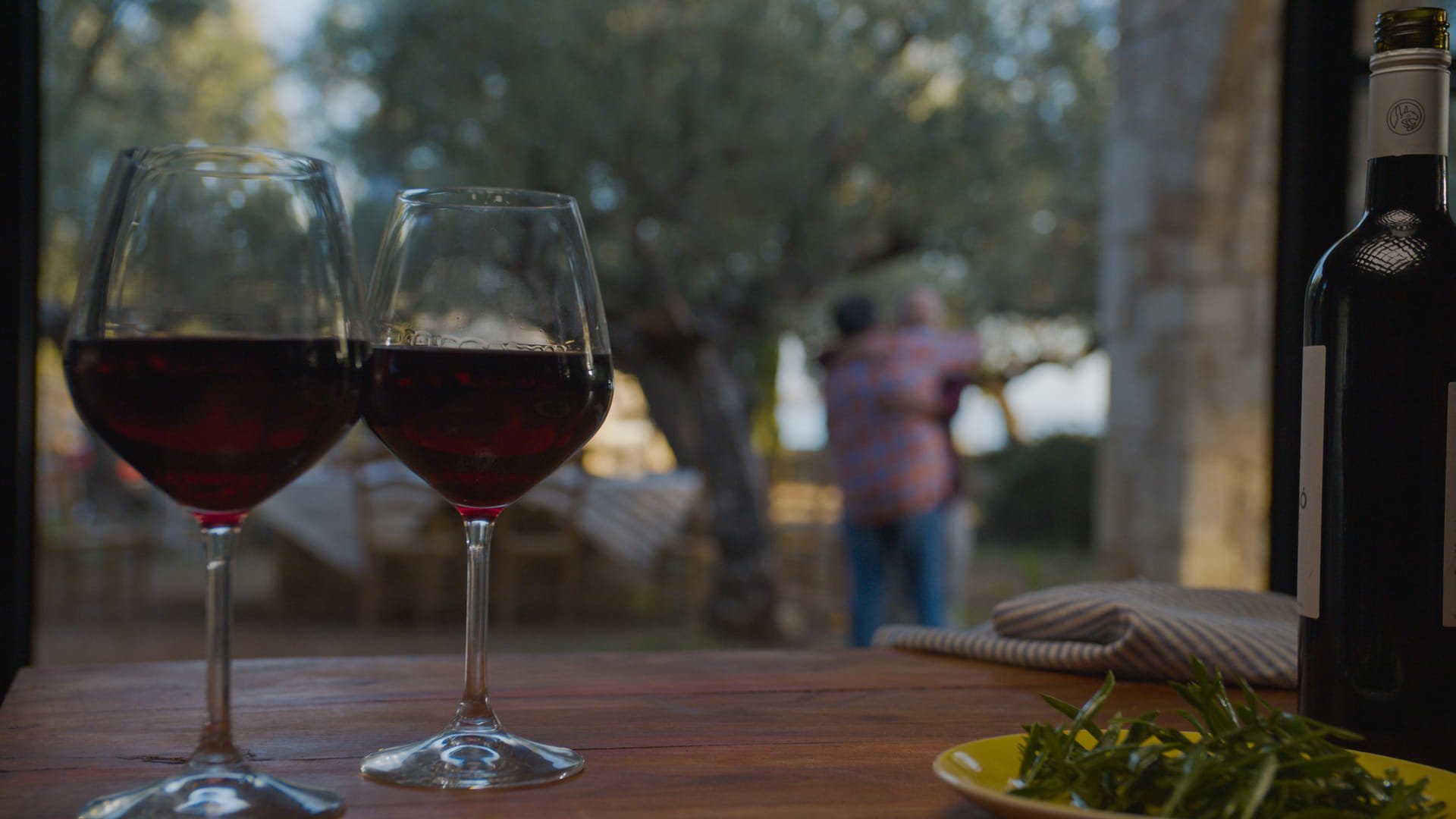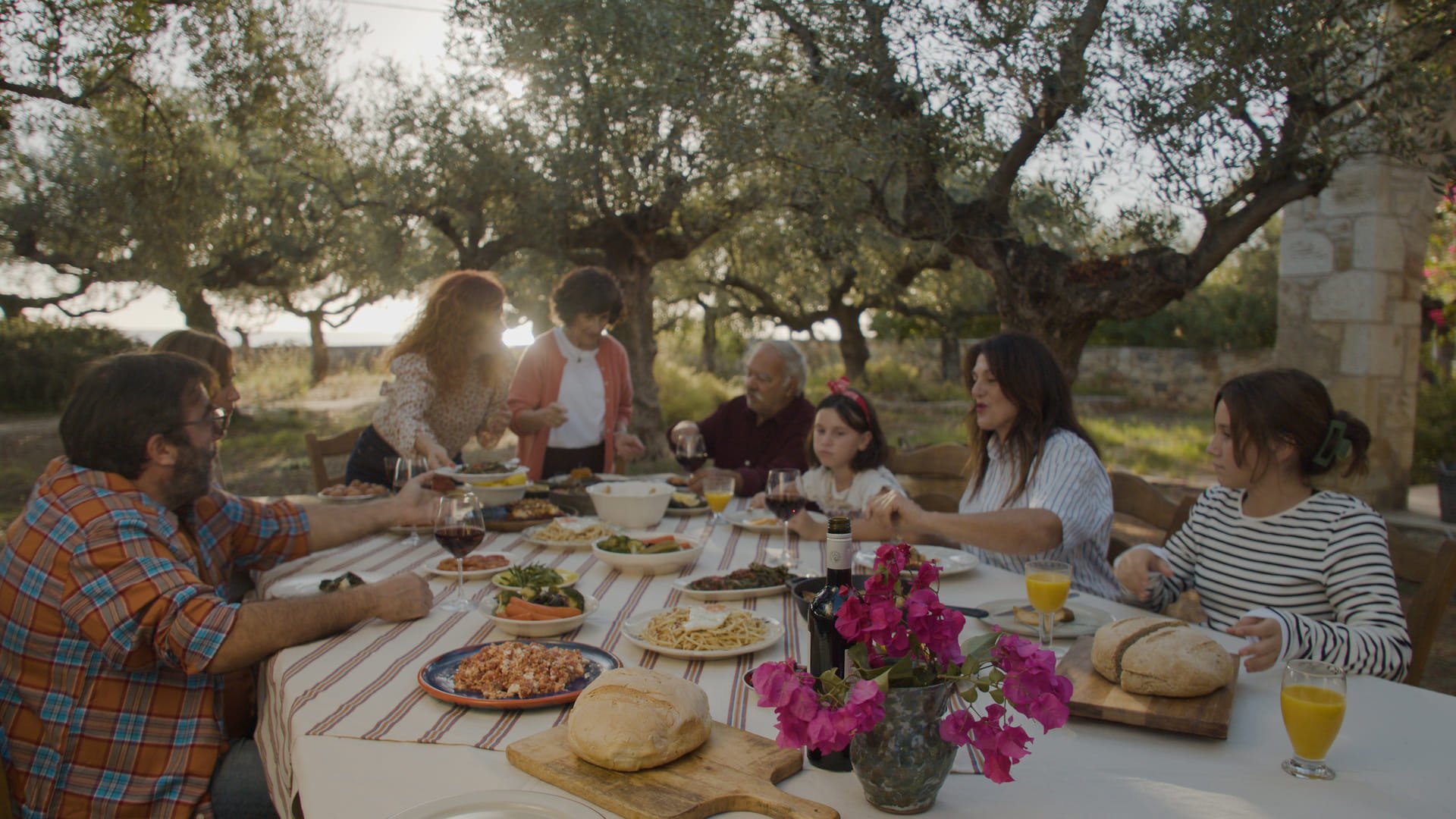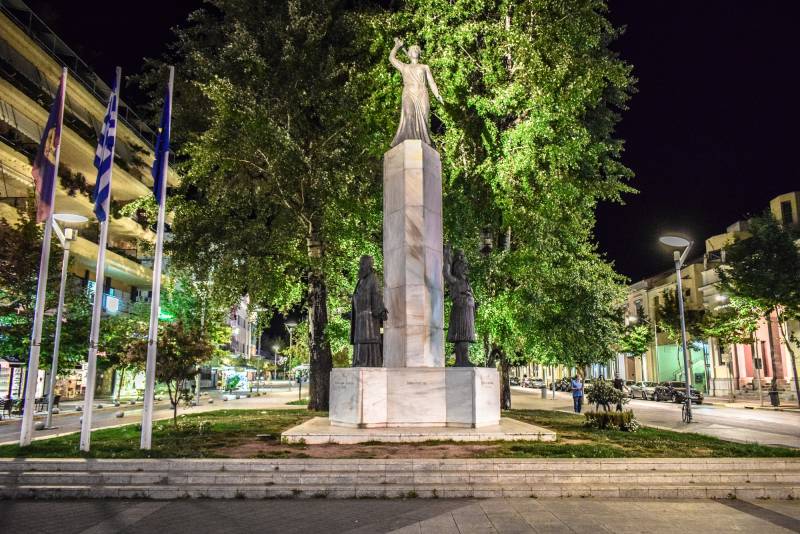The Messinian diet: Local products that offer a timeless taste of the Peloponnese
Centred around seasonality and pure ingredients, the Messinian diet is naturally high in the vitamins, minerals and antioxidants associated with long life and is part of the Mediterranean diet, which has been included in UNESCO’s list of Intangible Cultural Heritage. It includes olives and olive oil, wine, raisins and cheeses – all produced in large quantities and exported, as well as figs, oranges, artichokes and prickly pears and wild herbs gathered from the slopes of Mount Taygetos, the tallest mountain in the Peloponnese. But alongside the local products, it also captures the culture and everyday life of Messinia, such as locals being actively involved in the products they consume, the way recipes are prepared and passed down the generations, the open-hearted hospitality to visitors and even the terroir. Towns like Koroni embody the whole philosophy of the Messinian diet and you will find plenty of local products in tavernas, grocery stores and markets wherever you go. More often than not, they’ll have been produced within a few kilometres of where you’re staying.

The Messinian diet: The local products
Olives and olive oil
It isn’t hard to find the star of the show when it comes to local products in Messinia – and Kalamata in particular. Olives and olive oil are the protagonists of every kitchen and dinner table in the region. Small, family-owned olive groves are everywhere and the olive harvest brings families and friends together every autumn. The intense green colour and rich flavour of the olive oil produced – mostly from the Koroneiki variety of olive – is legendary in Greece and has been a Protected Designation of Origin product (PDO Kalamata) since 1997. It is also at the heart of the health benefits of the Messinian diet, containing 70-80% monounsaturated fatty acids and antioxidants, and it is no coincidence that Messinia was among the first regions in Greece involved in the olive oil trade.
An amazing 95% of the olive oil produced in Messinia is extra-virgin and it is used everywhere – in salads, pulses, stews, roasts, fried food, sweets … even in the famed pasto (cured pork with aromatics, smoked with olive wood). But it is best appreciated in its simplest form, drizzled over a slice of warm, homemade bread and accompanied by olives and tomatoes – the perfect snack.
Messinia is arguably even more famous for its table olives, made from the Kalamon olive variety (also known as Kalamata olives). Small quantities of olive oil are produced from Kalamon olives, but the vast majority are preserved in brine and served as table olives (also PDO-protected). Their intense black colour, firm flesh and fruity flavour are enjoyed all over the world and are a must in salads and many local dishes.
Consisting of olive oil, cereals, fresh or dried fruit and vegetables, and moderate amounts of fish, dairy and meat products, the Messinian Diet is naturally low in animal fat and high in monounsaturated saturated fatty acids, making it one of the healthiest diets in the world
Wine
Messinia has been a wine-producing region since antiquity (we know as much from the markings on coins, such as those of ancient Koroni showing a bunch of grapes) and it has a reputation today for its excellent quality grapes and wines.
Messinian wines have a characteristically fruity aroma, full flavour and strong colour and there are numerous vineyards that can be visited, where you can enjoy vineyard and cellar tours and wine tasting experiences where you will be introduced to local grape varieties.
White wines include those made from Roditis grapes (light to medium-bodied, with refreshing acidity citrus aromas), Fileri (lively but delicate aromas, light bodied, crisp acidity & low alcohol content) and Assyrtiko (fresh character, fruity aromas). Red wines include wines made from Fokiano (fruity, with characteristic acidity and bright red colour) and Mandilaria (deep and dark in colour, medium-bodied, with the aromas of overripe fruit and leather). Among the best wines of Messinia are those of PGI (Protected Geographical Indication) Trifilia in the northwest and PGI Pylia and PGI Messinia in the southwest.

Each autumn, the Messinia Terroirs Wine Festival showcases the breadth and quality of wine-making in the region, offering guests presentations and wine tasting and breathing new life into Messinia’s deep-rooted wine tradition
Raisins
Another important grape in Messinia is Mavromata – more commonly known as the black Corinthian grape – from which Messinia’s famous raisins are made. They’ve had a place in the local diet since ancient times (mentioned in the works of Herodotus, Plato and Aristotle) and are still eaten today as a snack or in dishes like stuffed tomatoes and peppers. They also play an important role in the economy of the Peloponnese, especially as an export product and are also used to make the region’s famous balsamic vinegar. If you visit Messinia in August, you can find the sweet and seedless Corinthian grapes drying under the sun on threshing floors, from where they are processed and shipped off to local and international markets.
Figs
Figs are another important Messinian local product that have grown in abundance since ancient times. In summer, they can be eaten straight from the tree and those that aren’t eaten fresh are preserved as jams and spoon sweets to be enjoyed with yogurt or a slice of bread or as fig paste and fig syrup. They can also be sun-dried and added to salads and other dishes or eaten as a snack at any time of year. Dried figs can be sprinkled with sesame seeds and wrapped in bay leaves or stuffed with nuts. Rich in vitamins A, B (1 & 6) and C, as well as minerals such as phosphorus, magnesium and potassium, figs also contribute to the health benefits of the Messinian diet.
There are food & drink festivals in Messinia throughout the year, celebrating tomatoes, oregano, artichokes, figs, pumpkins, sardines, wine and other seasonal local products
Cheeses
Sfela
One of region’s best known cheeses, Sfela is related to feta and has been a PDO product since 1996. It is a semi-hard cheese made from the milk (usually pasteurised) of goats and sheep reared exclusively in Messinia and neighbouring Laconia.
Its slightly salty and spicy taste comes from maturing in brine for at least three months and its name comes from the local dialect (sfela = strip), a reference to the way it is cut. It is also called ‘fire cheese’, probably because the curd is heated to produce a cheese with a lower moisture content and a harder texture.
Sfela can be eaten raw, but it can also be one of the stars of a meal, as a saganaki in a typical Greek meze – washed down with beer, ouzo and most dry wines. In Messinia, it is often the cheese of choice in pies, omelettes and salads. You might also find it sprinkled over pasta or in meat dishes and in meals with pulses.
Messinian Myzithra
A dry and salty version of so-called ‘fresh’ mizithra, Messinian mizithra is also made from the milk of sheep and goats that feed on the vegetation of the wider region and is used in traditional pies and as an ideal accompaniment to pasta. It can also be eaten on its own with a drizzle of honey.
Messinian Graviera
A hard yellow cheese made from 100% pasteurised goat’s and sheep’s milk, with a slightly sweet and spicy flavour and rich aroma. It matures for at least three months before reaching the table and is one of the most awarded cheeses of Messinia.
Messinian Kefalotiri
A local product of Messinia since Byzantine times, kefalotiri is a hard cheese, also made from pasteurised sheep's and goat's milk and is perfect as part of a meze with a glass of ouzo or another aperitif, or grated on pasta.
Charcuterie
Pork pasto
A traditional meze from Messinia that goes well with cheese, beer or spirits. The pork is first boiled with the fat removed, then salted and smoked with wood and aromatic plants. Finally, it is cooked with wine and flavoured with orange. It can be preserved in oil or eaten fresh, thinly sliced and accompanied by wine, beer or a local spirit, or used as an ingredient in traditional recipes such as omelette and kagianas.
Sausage with orange
Another traditional Messinian local product that has been made in the same way for centuries. The characteristic flavour of Messinian sausages is the orange and salt (which helps to preserve them). Alternatively, they can be smoked with herbs and spices.
Herbs & Aromatics
Oregano
Also known as the ‘joy of the mountain’ (in ancient Greece, it was the plant of happiness), oregano is an aromatic herb inextricably linked to traditional Greek cuisine. It grows in the hilly areas of Messinia - particularly on Mount Taygetos, where it blooms in late summer and autumn. Not only does oregano work wonderfully in sauces and salads, meat and fish dishes, but it also has beneficial properties for the body (with natural booster and antiseptic qualities).
Thyme
A symbol of courage for ancient Greeks, thyme is also used as an alternative to oregano in food or as an infusion and has therapeutic qualities.
Fennel
Found throughout the Mediterranean, with a mild aniseed flavour that goes well with fish and meat dishes and in vegetable soups.
Mountain tea
The dried flowers, leaves and stems of the Sideritis plant, found in the mountainous regions of Greece and abundant on Mount Taygetos between 1,300 and 2,000 metres. Naturally caffeine-free, mountain tea is renowned for its health benefits. In ancient times, it was used to heal wounds caused by iron weapons (sideros means iron in Greek).
Spirits
Liqueur
Liqueur is a Messinian spirit that can be drunk either as a digestive or neat with ice and is the perfect souvenir to take home with you. Tradition says that it should be distilled in jars with sugar under the summer or autumn sun and served as a gift at feasts. You’ll find liqueurs made from a variety of ingredients, such as prickly pears, bananas, mastiha (mastic resin) and raki (different from Cretan raki).
Ouzo
Messinian ouzo differs from traditional ouzo in that it is distilled with aromatic spices such as star anise and occasionally nutmeg or mastiha. The aniseed flavour makes ouzo an ideal accompaniment to seafood dishes and meze. Alternatively, you can order a tsipouro … also made locally.
Cognac
Traditionally synonymous with the good life in Greece, cognac is made from grapes that are first turned into wine, then distilled and aged in oak barrels for at least three years. Contact with the wood and the addition of rose petals help to develop the flavour. It is usually consumed as a dessert drink.
Sweets & Preserves
Honey
The honey of Mount Taygetos comes from bees that feed on a variety of plants and flowers. The most common types in Messinia are fir honey and heather honey, but you will also find thyme, blossom, sage and pine honey. It is a 100% natural product that is used as a sweetener instead of sugar in many recipes and is an integral part of the Messinian diet. You’ll find it in pies or as an accompaniment for toast, crackers, bread and rusk). It can be drizzled over yogurt and dried nuts or over sfela cheese. If you find yourself in Messinia, don’t leave without trying diples (twisted pieces of dried dough served with honey and ground cinnamon).
Pasteli
Kalamata's famous Pasteli bars are traditionally made with just two ingredients... exceptional quality local honey and sesame seeds, although you can also find versions with almonds and mixed nuts, or soft or crunchy. They are considered a healthy snack (with more calcium than milk) and a great source of quick energy, or they can be eaten with yogurt. Be sure to take a few bars home with you.
Loukoumia
A timeless dessert, Kalamata loukoumia (similar to Turkish delight) come in many flavours, including mastiha, ouzo and rosewater, but are always generously dusted with icing sugar. Order yourself a cup of Greek coffee (plain or sweet) and enjoy.
Preserves & jams
Fruit and vegetables that aren't eaten fresh in Messinia are preserved in jams and spoon sweets (traditionally offered as gifts to visitors) that can be enjoyed all year round. You'll find jams made from strawberries, figs, prickly pears and green olives, and spoon sweets made from ingredients as varied as prunes, sour cherries, , carrots and even Arabic peanuts.
Arabic peanuts
Arabic peanuts (or Arachida) are produced in the Bournias area of Kalamata and are a rich source of 'good fat'. They can be eaten as a snack, with fruit or dried figs, and come in three different forms: shelled (where you eat only the seeds), whole (with the shell) or pureed like peanut butter (which will change the way you look at the peanut butter you know so well). It is also available as an oil.

Vegetables & pulses
Wild asparagus
Wild asparagus signifies the arrival of spring in Messinia. They can vary in colour from off-white to green to almost black and are found across the region, in both coastal and mountain parts. In season, you’ll find asparagus in local dishes, including eggs, fish and meat.
Mikromani artichokes
There is a variety of wild artichoke in Messinia known as Mikromanis artichoke, named after a village (near Thouria just outside Kalamata) that hosts an annual Artichoke Festival. Guests at the festival are treated to a variety of dishes created around artichokes, which are another nutritious and healthy part of the Messinian diet.
Antrakla
Also known as glystrida, antrakla is a wild green that is rich in omega 3-fatty acids. It can be eaten raw or boiled and is especially tasty in salads and soups.
Rovitsa psilofasoulo
A green, lentil-sized pulse cultivated mostly in the Kalamata region. It is a good source of protein and is rich in vitamins and minerals like iron and potassium, and is wonderful as a velouté soup or pureed as a cold appetiser. They can even be made into vegetarian meatballs. One of the great advantages of rovitsa is that they don't need to be soaked overnight.
Messinian local products: Culinary traditions that bridge generations
Every meal you enjoy during your holidays in Messinia will give you the opportunity to experience the talent of local chefs whose fresh ideas build on the work of older generations and celebrate local products that link them to both their land and their traditions. In fact, whether you’re dining in a traditional or a modern restaurant in Messinia, you’ll often find that the owners are connected to the local products in their menu. After all, in Messinia farm to fork is a way of life.

Wine Tour & Tasting in a Winery in Messinia





